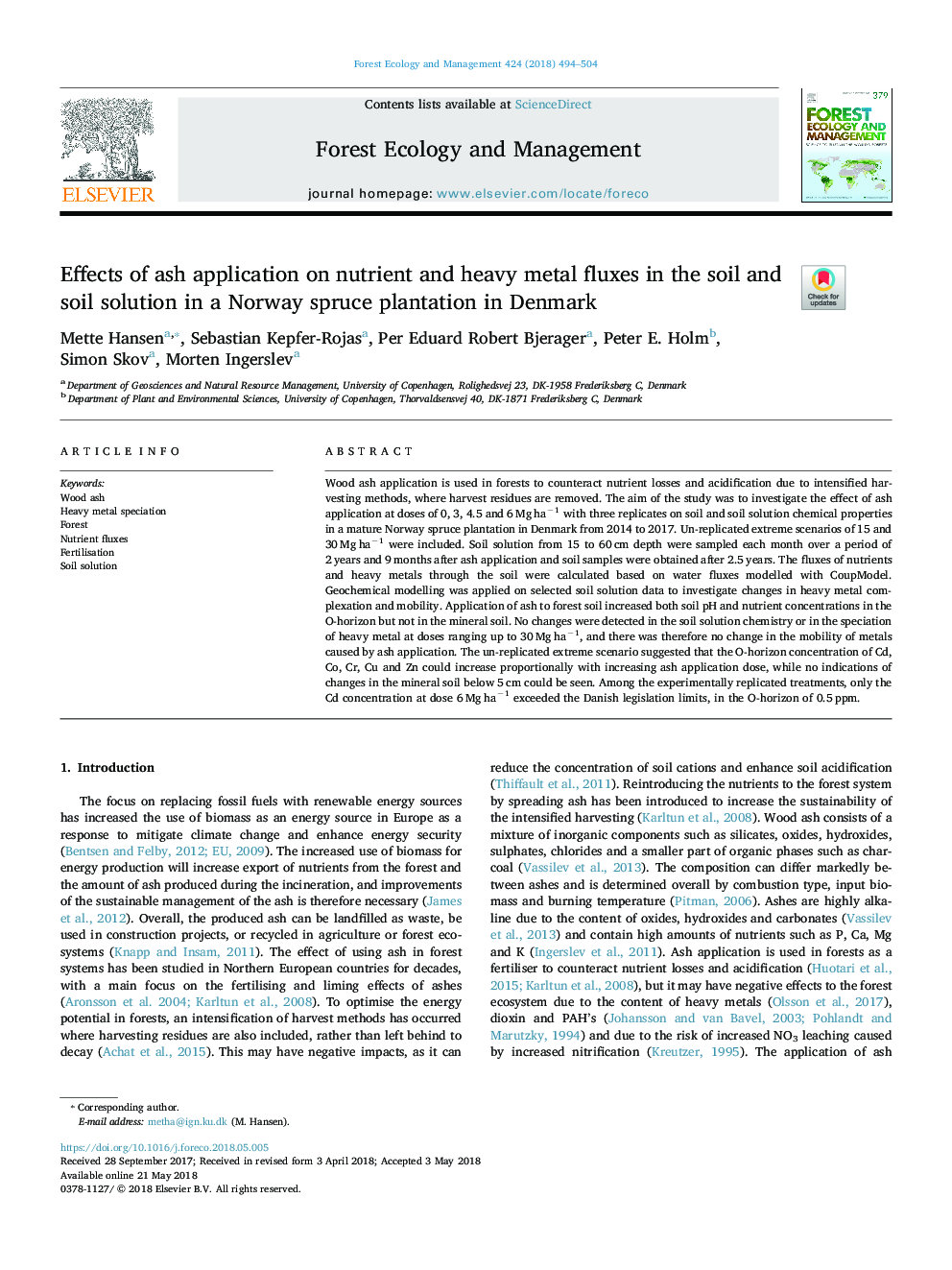| Article ID | Journal | Published Year | Pages | File Type |
|---|---|---|---|---|
| 6541621 | Forest Ecology and Management | 2018 | 11 Pages |
Abstract
Wood ash application is used in forests to counteract nutrient losses and acidification due to intensified harvesting methods, where harvest residues are removed. The aim of the study was to investigate the effect of ash application at doses of 0, 3, 4.5 and 6â¯Mgâ¯haâ1 with three replicates on soil and soil solution chemical properties in a mature Norway spruce plantation in Denmark from 2014 to 2017. Un-replicated extreme scenarios of 15 and 30â¯Mgâ¯haâ1 were included. Soil solution from 15 to 60â¯cm depth were sampled each month over a period of 2â¯years and 9â¯months after ash application and soil samples were obtained after 2.5â¯years. The fluxes of nutrients and heavy metals through the soil were calculated based on water fluxes modelled with CoupModel. Geochemical modelling was applied on selected soil solution data to investigate changes in heavy metal complexation and mobility. Application of ash to forest soil increased both soil pH and nutrient concentrations in the O-horizon but not in the mineral soil. No changes were detected in the soil solution chemistry or in the speciation of heavy metal at doses ranging up to 30â¯Mgâ¯haâ1, and there was therefore no change in the mobility of metals caused by ash application. The un-replicated extreme scenario suggested that the O-horizon concentration of Cd, Co, Cr, Cu and Zn could increase proportionally with increasing ash application dose, while no indications of changes in the mineral soil below 5â¯cm could be seen. Among the experimentally replicated treatments, only the Cd concentration at dose 6â¯Mgâ¯haâ1 exceeded the Danish legislation limits, in the O-horizon of 0.5â¯ppm.
Related Topics
Life Sciences
Agricultural and Biological Sciences
Ecology, Evolution, Behavior and Systematics
Authors
Mette Hansen, Sebastian Kepfer-Rojas, Per Eduard Robert Bjerager, Peter E. Holm, Simon Skov, Morten Ingerslev,
